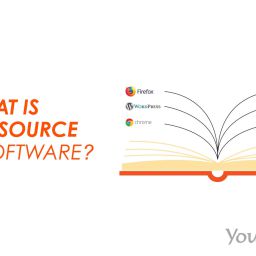
In a world where digital experiences have become integral to our daily lives, ensuring accessibility for all is not just a matter of social responsibility; it’s a fundamental aspect of good design. Inclusive design, a principle embraced by LeMeniz, a renowned name in software development, centers on creating products and solutions that are accessible and user-friendly for everyone, regardless of their abilities or disabilities. In this blog post, we’ll delve into the concept of inclusive design and how LeMeniz is championing accessibility through its software solutions.
Understanding Inclusive Design:
Inclusive design, often referred to as universal design, is an approach that seeks to make products, services, and experiences usable by the broadest range of people, including those with disabilities. It’s not merely about complying with regulations; it’s about fostering a culture of empathy, where design is driven by the goal of making the world more accessible for all.
LeMeniz’s Commitment to Inclusive Design:
- Accessible Websites and Applications:
- LeMeniz is dedicated to developing websites and applications that adhere to the highest accessibility standards. This ensures that people with disabilities can navigate and interact with digital content effortlessly.
- User-Centric Design:
- The foundation of inclusive design is understanding the diverse needs of users. LeMeniz conducts in-depth user research to design with empathy, considering a wide range of user scenarios and personas.
- Compatibility with Assistive Technologies:
- LeMeniz’s software solutions are engineered to seamlessly work with assistive technologies, including screen readers, voice recognition software, and alternative input devices.
- Text Alternatives and Captions:
- They emphasize the importance of providing text alternatives for non-text content like images and videos, making digital content accessible to those who rely on screen readers. Additionally, they promote the use of captions for multimedia content.
- Simplified and Consistent Navigation:
- LeMeniz designs user interfaces with straightforward and consistent navigation. This benefits users with cognitive or learning disabilities and also enhances the overall user experience.
- Multi-Device Compatibility:
- In an era where people access digital content through various devices, LeMeniz ensures that their software is responsive and compatible with different screen sizes and input methods.
- Regular Testing and Feedback Loops:
- LeMeniz conducts frequent accessibility testing and encourages feedback from users, including those with disabilities. This iterative approach helps them identify and rectify accessibility issues promptly.
The Significance of Inclusive Design:
- Legal Compliance: In many parts of the world, legislation requires businesses to adhere to accessibility guidelines. Ensuring inclusive design is not only ethical but also a legal necessity.
- Expanded User Base: By making your software accessible, you tap into a broader user base that includes individuals with disabilities. This is not just about inclusivity; it’s a smart business move.
- Enhanced User Experience: Inclusive design often leads to a better user experience for everyone. Clear and intuitive design benefits not only those with disabilities but all users.
- Positive Brand Reputation: Demonstrating a commitment to inclusivity enhances your brand’s reputation and showcases a strong sense of social responsibility.
- Future-Proofing: As the world’s population ages, the need for accessible design will grow. Embracing inclusive design now ensures your software remains relevant in the future.
The LeMeniz Advantage:
LeMeniz’s approach to inclusive design is characterized by:
- Expertise: They have a dedicated team of experts well-versed in inclusive design principles and accessibility standards.
- Innovation: LeMeniz goes beyond basic compliance, actively seeking creative solutions to make digital experiences more accessible and enjoyable for all.
- User-Centered Approach: They collaborate with users with disabilities in the design and testing processes, ensuring their software addresses real-world needs.
- Commitment to Continuous Improvement: LeMeniz acknowledges that accessibility is an ongoing journey and remains dedicated to enhancing their software based on evolving needs and standards.
Conclusion:
Inclusive design isn’t a choice; it’s a responsibility and an opportunity. LeMeniz’s proactive approach to inclusive design not only ensures accessibility for all but also reflects a commitment to building a more inclusive and equitable digital world. Their software solutions are not just functional; they’re empathetic, user-centric, and welcoming to every individual, regardless of their abilities. With LeMeniz, accessibility isn’t a checkbox; it’s a core principle that drives their software development process.















